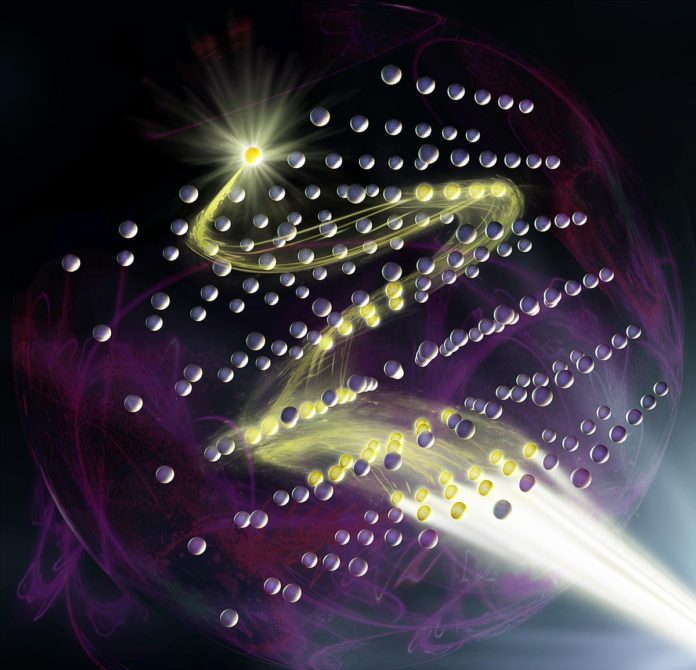A new quantum technology has been proposed by an international team that could help find applications in both networking and quantum computing. The innovation demonstrates how a cloud of atoms can work as a lens by focusing a light-induced excitation from a single photon into just one or a few atoms.
The reason why we get such a high Internet bandwidth is that we encode our data in the light. Researchers are quite confident that quantum networks will use light too. In a similar way that we convert today’s optical signals into electrical signals, quantum signals may need to translate their formats into something that’s easier to process too. While light particles are fast communicators, they rarely interact with one another.
Quantum bits of data have another challenge, and that is that they’re stored in single particles of light, so reliably capturing and being able to control a single-photon signal is quite difficult. To begin with, the team decided to start with a system that’s good at collecting rays of atoms. However, there is a problem with the system. When the photon is absorbed the excitation spreads across several atoms. It’s much easier to process or store information in excitation if it’s confined to a single atom.
“ Ultimately, the goal is to map photonic qubits with high efficiency onto single atoms, such that the well-developed quantum computing toolbox with single and two-qubit gates becomes available,” says CQT’s Alexander Glaetzle. The way it works is by adjusting energy levels of the atoms by illuminating them with the light of graduated intensity. In doing this the excitation between the atoms changes.
The physicists come up with several variants of their lenses where a single spin excitation gets transformed into a state with entanglement between excitation at separated focal points. Although it’s just simulations, for now, Alexander is hopeful that with the right experimental setups the real potential of this technology can be realized.

